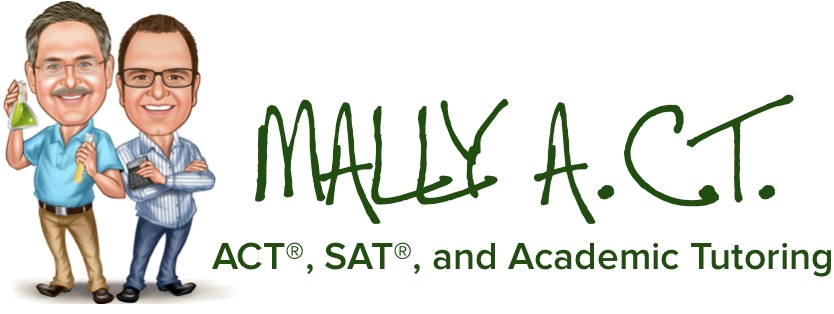Study Tips for the ACT and the Classroom
/How students should study at home for the ACT vs. how students should study for their tests in school really do have a lot of similarities, even though they’re totally different situations.
When we have students come through the door at Mally A.C.T., we try to give them tips that not only help them meet and exceed their standardized testing goals but tips that can also help out in class.
Here are some of our favorite tips to give to students that come in for both ACT and SAT tutoring, as well as academic tutoring.
Review the material frequently
Instead of cramming, review test material for a little bit each day. If students plan for plenty of time to learn the material, they won’t feel as stressed. Treat studying like a doctor’s appointment or a meeting and schedule study time in advance – that way, students can already have time carved out of their busy schedules specifically for studying.
Get a sense of your strengths and weaknesses
As students review the material, they should take note of material that they don’t understand or ask themselves “what types of questions am I worried about?”
By making sure they know where their weaknesses are, students can make sure they work on these problems before the test.
Plus, it’s better to work on the harder material before easier material when doing homework or studying.
This doesn’t mean students should ignore the material you know. Make room to review material that they are comfortable with, paying close attention to details that are easy to overlook.
Don’t just re-read stuff
When students simply go over the readings for a class, they end up passively studying. In doing so, they do not actually engage with the material which undermines memorization and actual learning.
Instead of re-reading information or texts, it’s helpful for students to try and develop study questions and answer them. Not only is it a great way to help encourage learning the material, it could also simulate what types of questions can come up on the actual test. Another way to really engage with information is by connecting it to other topics, events, classes, or experiences – this makes the material more concrete and can help with retention.
Take breaks when studying
After reviewing or working on material for an hour, it’s important to take a 5-10-minute break.
During this break, try getting some exercise in – do a couple jumping jacks, pushups, or just go on a short brisk walk. Exercising increases the blood flow to the brain, which then increases productivity. Exercising can also alleviate feelings of stress and anxiety.
Listen to your body
If the clock strikes midnight and studying began at 6:00 a.m., sleeping is more beneficial than studying at that point.
During the day, be mindful of productive times and mentally-drained times, and schedule studying sessions accordingly to increase productivity.
-----
What are some of your favorite study tips that you’ve picked up along the way?


